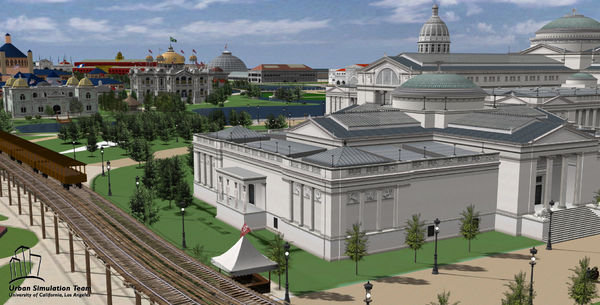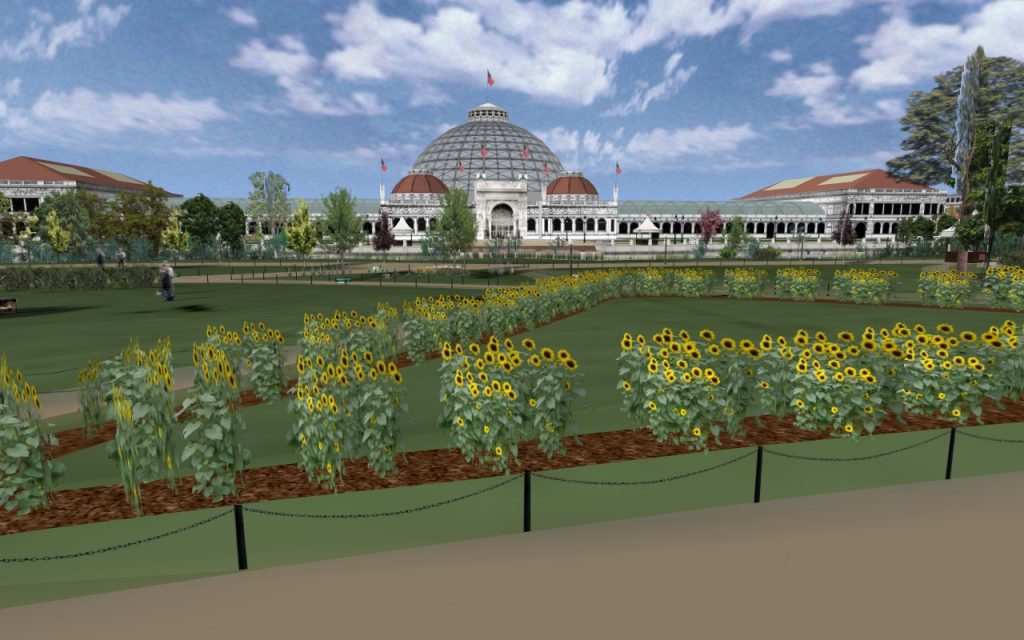
By CDH Guest Author on December 15, 2020
Written by Megan Reusche
In part three of four in the XR series, we take a more in-depth look into VR through VSim, a VR software developed by Dr. Lisa Snyder, the Acting Director of the Research Technology Group (RTG) and manager of GIS, Visualization and Modeling at UCLA.
VSim is a software that allows users to create computer models of historic sites and environments. In these three-dimensional spaces, users can build narratives by embedding text, images, and links within the modeled environment. The goal of VSim is to create similar educational applications with interactive computer technology that can be disseminated in schools and allows users to engage with cultural and urban environments.
VSim as an Educational Tool
VSim was developed with funding from the National Endowment for the Humanities to encourage the educational use of interactive, three-dimensional computer models. Two key features of this software include the narrative feature and the embedded resources feature. This allows users to create presentations using the environment, including a flight simulation mode to navigate the space and a “slideshow” where you can set a timer for how long the application lingers on a particular building before it moves onto the next.
Educators and students can download the software on the VSim Repository and Archive and use it for presentations or assignments. As a teaching and learning resource, VSim holds a lot of promise. Instead of writing a formal paper, students can download models, narratives, and embedded resources in the archive and add them to a model. Text, photos, links, and audio files can also be implemented into the environment. Any models you make will also be preserved and accessible in this location, as well, so that students can submit their projects and engage with each other’s creations.

Reconstructing the 1893 World’s Colombian Exposition
Lisa started reconstructing the 1893 World’s Colombian Exposition, known to many as the Chicago World’s Fair, in 1997 using VSim as a test case for studying education applications. Ideally, a software like VSim can be used to reconstruct historical models of architecture, places, and environments so that students can engage with a 3D visual.
From reconstructing the exhibition halls to creating details about the people who attended the fair, Lisa has dedicated a lot of time to transferring intricate details from archival materials to the application. To create the model, Lisa looks at historical guides of the fair to build the architectural form of the basic geometric layout, then digitizes this model.
“One of the challenges with recreating this model is all of the detective work that needs to be completed. With all the research that comes with uncovering the architecture of the buildings and historical artifacts, there are a lot of fun and interpretive decisions that we are able to make. There is a lot of trial and error that goes into collecting the evidence and creating a model based upon old photos.”
As of today, the model is still an ongoing project.
“Even when you keep building different details of the architecture or the people, you never really are ‘done’ with it. There is always more available evidence out there for someone to discover.”
VSIM is a great example of how VR software can be used for research and educational purposes. In the final installment of the series, we will explore augmented reality and some projects here at UCLA.
Photos courtesy of VSim.Library.UCLA.edu and IDRE.ucla.edu
